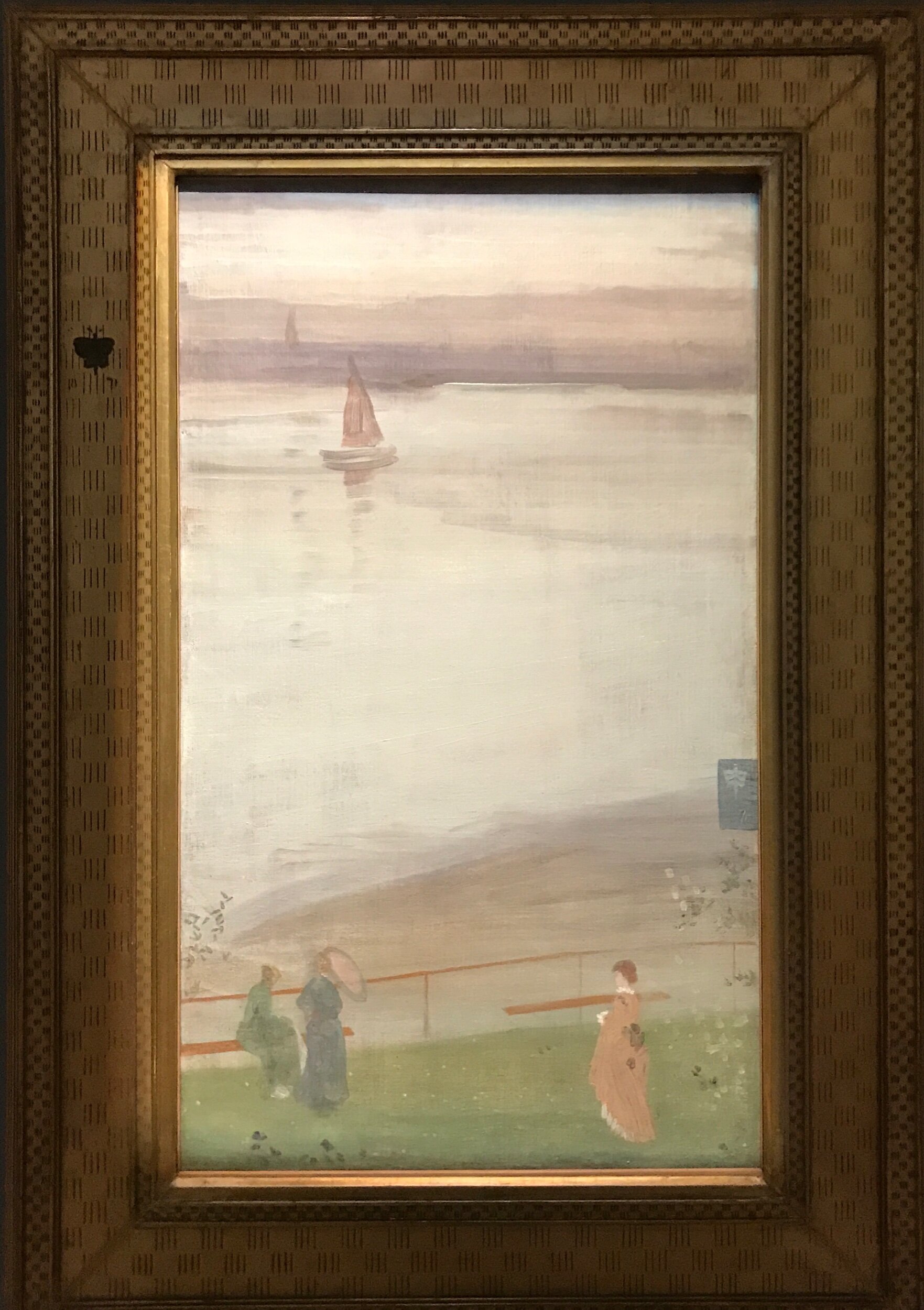Étude, Theodore Robinson
Giverny is always an uplifting immersion in resplendent nature and art, and the current exhibition is also the perfect place for an American like me to learn about, well, American art. Studio of Nature showcases plein air landscapes from 1860 to 1910, but what makes the show really exciting is discovering lesser known artists and their curiosity. They were intrigued by bubbling innovations in Europe as well as the grandiose vistas of their own country.
L’Iceberg, Frederic Edwin Church
Starting with Hudson River artists like Frederic Edwin Church, the majesty of the American landscape with dramatic realism leads the way.
Then the ambiance shifts to the moody melodies of Whistler. With his Nocturnes and Variations, this trailblazer broke away from realism towards minimalistic meditations as in the aqueous, atmospheric paintings and etchings here.
Nocturne, Palais, Whistler
Nocturne, Whistler
Variations en Violet et Vert, Whistler
And then, the wonderfully eclectic William Merritt Chase. A huge influence as a teacher (his school is now Parsons), he was such a prolific and exploratory artist. Untitled hints to Whistler, whom Chase had met, whereas the Olive Orchard bathes in sunlight, and Shinnecock is graphic and linear.
Chase, as many of his contemporaries, studied and worked in Europe, especially lured towards Paris, the artistic capital. Many attended the Royal Academy of Munich and the Académie Julian, and from there often headed to Monet’s fief.
Untitled, William Merritt Chase
L’Oliveraie, Chase
Matin sur la Digue Shinnecock, Chase
Arbres en Fleur, Theodore Robinson
Hence American Impressionism bloomed, and a group called The Ten pretty much mimicked the French Impressionists in splitting from the Salons.
A delightful discovery for me was Theodore Robinson with his dazzling and fresh Etude. Or his daring Arbres en Fleur, its plunging perspective, and near abstraction. The figures in symbiosis with nature are beguiling. Having a weak constitution due to asthma, you can just imagine him cooped up inside the Hotel Baudy, maybe taking a photograph of this scene.
Le Bassin de Nénuphars, Willard Metcalf
The list of artists goes on: Childe Hassam, sometimes called the American Impressionist, John Henry Twachtman, one of the most inventive painters of that generation, and Willard Metcalf, the first American painter who spent time in Giverny. His lilies are delectable.
L’Apres Midi D’Automne, Lilla Cabot Perry
And then there’s Lilla Cabot Perry. Have you heard of her? She became a close friend of Monet, quite a feat as he was tired of the American invasion in his town. Speaking French likely helped. And she was indeed highly cultivated, from old New England stock to boot, championing artists like Monet in the US. But she was a largely self-taught painter, only taking lessons in her 30s. Perhaps history doesn’t repeat, but stories of women do rhyme.
All of this allowed me to embrace the thirst of American artists who travelled far, soaked up new ideas, and came back to the US reinvigorated. To me, that’s the source of enrichment and innovation.










